Getting Magical Ink That Lasts: A Pro Tattooist’s Guide
As a tattoo artist who’s been in the game for over fifteen years, I’ve seen countless trends come and go. But some themes are timeless. One of the most enduring requests I get, week in and week out, is for tattoos inspired by a certain beloved wizarding world. And honestly, I get it. I grew up with those stories, too. That universe feels like a real part of my own history, and for so many of my clients, it’s the same.
In this article
- First Things First: It’s More Than Just a Picture
- Illustration vs. Symbolism: What Actually Works on Skin?
- Choosing a Style for Your Kind of Magic
- Let’s Talk Galleons: What a Good Tattoo Actually Costs
- Popular Concepts, Reimagined by a Pro
- The Practical Magic: Your Tattoo Journey
- The Aftercare Spell: This Part Is On You
- Galerie d’inspiration
But here’s the thing: there’s a huge gap between a cool picture you found online and a piece of art that will look amazing on your skin for the next 50 years. My job is to bridge that gap. So, this isn’t just going to be a list of design ideas. I’m here to share what I’ve learned from thousands of hours with a tattoo machine in my hand. We’ll get into what makes a design really work, how to pick the right artist, and the secrets to taking care of your new ink so the magic never fades. Let’s turn that passion into a piece of art you’ll be proud of forever.
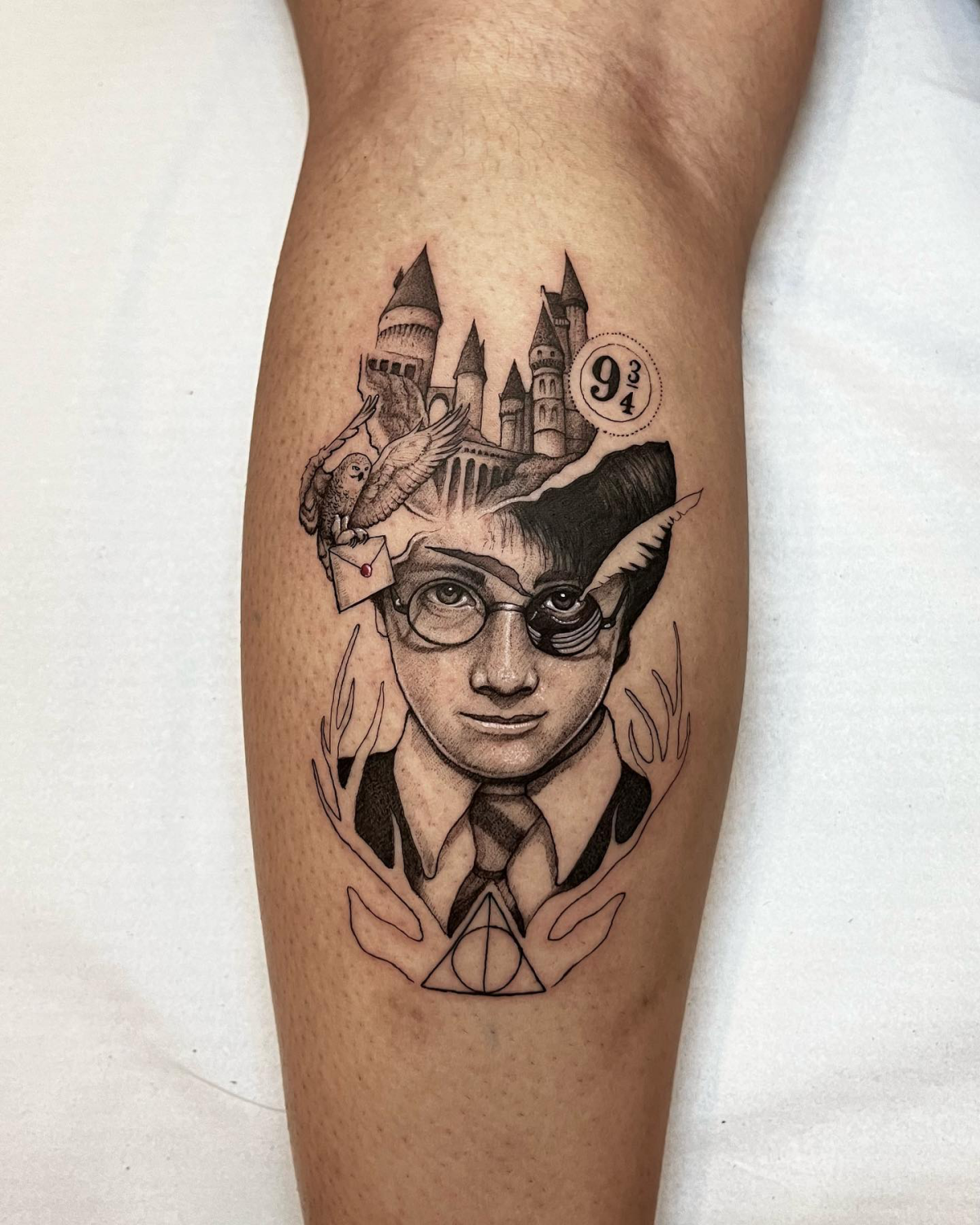
First Things First: It’s More Than Just a Picture
The very first question I ask a client isn’t “What do you want?” but “Why do you want it?” The answer tells me everything I need to know. Someone asking for the iconic symbol of the three magical artifacts might be drawn to the story’s deep themes of loss and acceptance. Someone else might just love the clean, geometric shape. Both are perfectly valid reasons, by the way.
Knowing the ‘why’ is what helps me design something truly personal. For the client connected to the themes, we could weave in lilies to represent love or a stag’s antlers for protection. For the one who loves the geometry, we can focus on impossibly clean lines and perfect symmetry. A great tattoo always starts with a great conversation.
So, I encourage you to think beyond the obvious. Is your tattoo about bravery? Maybe it’s not the house lion, but a stylized version of the founder’s sword. Is it about finding light in the darkest of times? A famous quote from the headmaster is popular, but what about a simple illustration of the light-capturing device, or even a sprig of a healing herb? The more personal you make the core idea, the more unique your tattoo will be. It gives your artist the raw material to build something that is 100% yours.
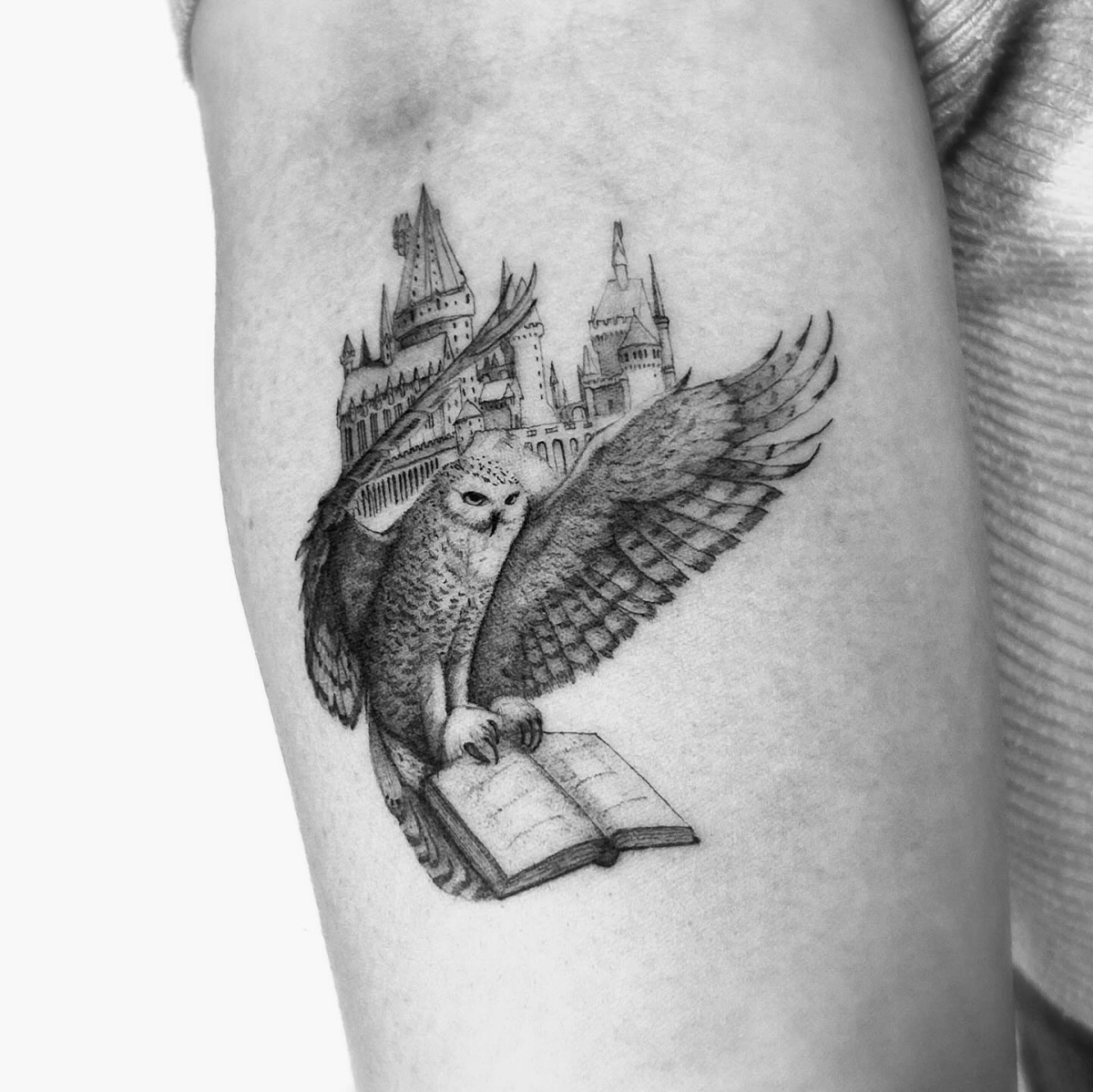
Illustration vs. Symbolism: What Actually Works on Skin?
Clients often bring me beautiful, full-color illustrations straight from a book or a still from a movie. And while these are gorgeous, they aren’t tattoo designs. Think of it this way: art on paper and art on skin are two completely different languages. Paper doesn’t age, stretch, or spend its life in the sun. Your skin does all of those things.
A simple, bold symbol—like a lightning bolt scar or a sign for a magical train platform—is straightforward to translate to skin. The design is clear, the lines are simple, and it will be readable from across a room for decades. On the other hand, a huge, illustrative scene, like the final battle at the castle, is a whole different beast. It’s packed with details, and to make those details last, the tattoo has to be large. A tiny, detailed castle will inevitably blur into an unreadable smudge in ten years. But a full back piece? Now you’re giving the artist the canvas they need to create depth and clarity that will hold up beautifully over time.
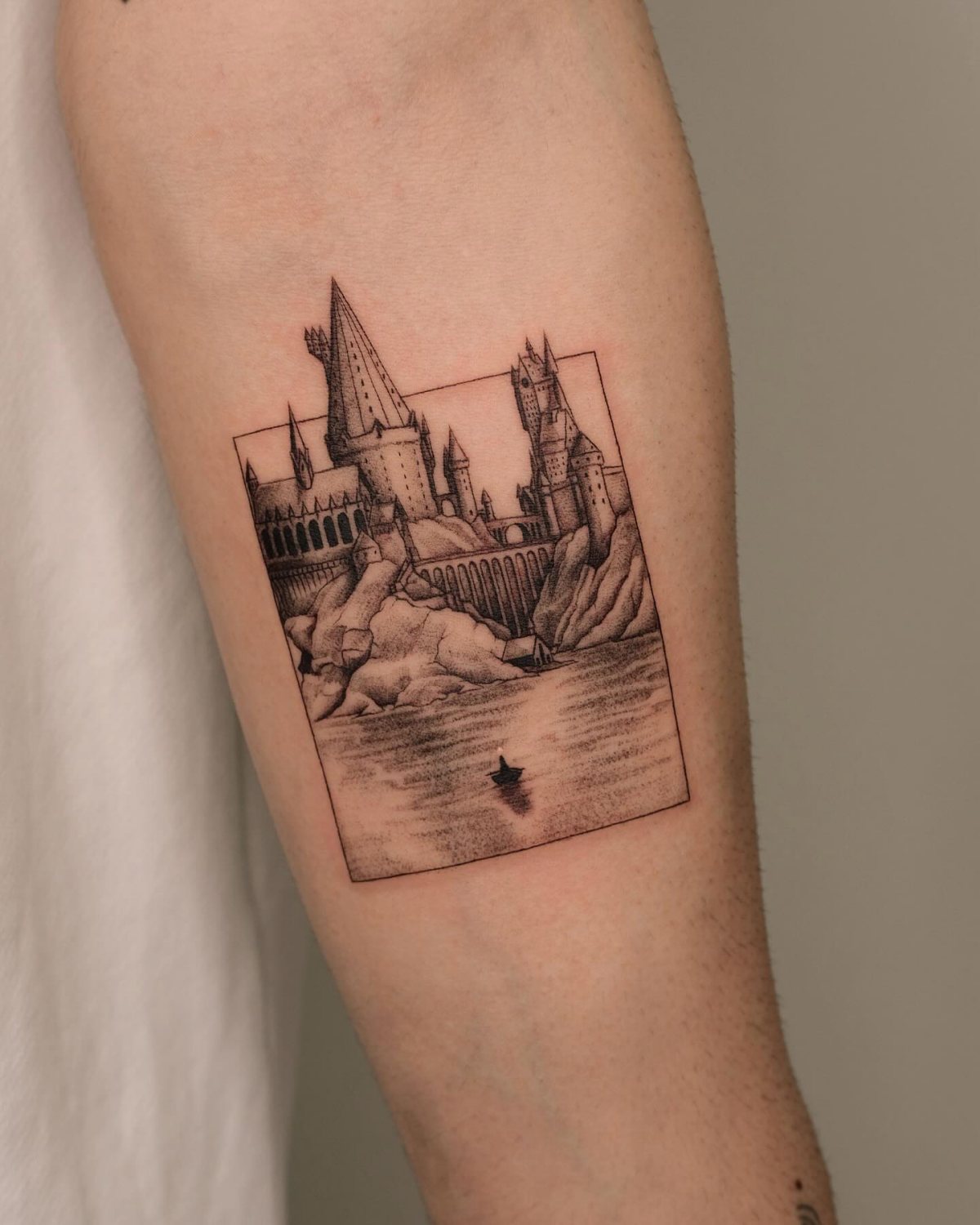
Choosing a Style for Your Kind of Magic
A tattoo from this universe can be done in any style imaginable. The real key is finding an artist who is a master of the specific style you’re picturing. You wouldn’t ask a plumber to fix your roof, right? Same idea here. Asking a traditional artist for a photo-realistic portrait of the brooding potions master is setting everyone up for a tough time.
-
Fine Line & Micro Tattoos: This style is incredibly popular for small symbols, wands, and simple quotes. It uses a single needle or a tiny grouping of needles to create delicate, precise-looking lines. The risk? If the artist doesn’t go deep enough, the ink can fall out during healing. If they go too deep, the line can “blow out,” creating a fuzzy, bruised look under the skin. Heads up: The very finest of these lines will likely soften and fade more quickly, especially on high-movement areas like hands or feet. Longevity can be a concern, so it’s best for simple, clear designs.
-
American Traditional & Neotraditional: Okay, full disclosure, this is my personal specialty. Traditional tattoos are built to last, plain and simple. They rely on bold black outlines, a limited but powerful color palette, and solid color packing. A neotraditional style uses that same solid foundation but introduces more colors and illustrative detail. A neotraditional phoenix or a stylized house crest will look punchy and vibrant for decades. The bold outlines act like little walls, keeping the colors locked in and preventing them from blurring over the years. This style has excellent longevity and is perfect for iconic creatures and symbols.
-
Black and Grey Realism: This is the go-to style for lifelike portraits or creatures like a hippogriff or one of those skeletal winged horses. The artist uses different dilutions of black ink, called grey washes, to build up smooth gradients and incredible depth. This style is all about shading, not lines. A good realism artist’s portfolio will look like a gallery of stunning black and white photos. It’s a time-consuming and often expensive style, but the results can be absolutely breathtaking. It’s best for larger pieces where the detail can truly shine.
-
Watercolor Style: I feel it’s my duty to be honest about this one. Watercolor tattoos look amazing in fresh photos, but they often don’t age well. The style gets its soft, blended look by using color without those strong black outlines. Without the outlines to hold the pigment in place, the colors can fade and bleed into each other over the years. A design that looked like a vibrant splash of color on day one can look like a faded, indistinct bruise ten years later. A better approach that some artists are using now is to combine watercolor effects with a fine line structure, which gives it more staying power.
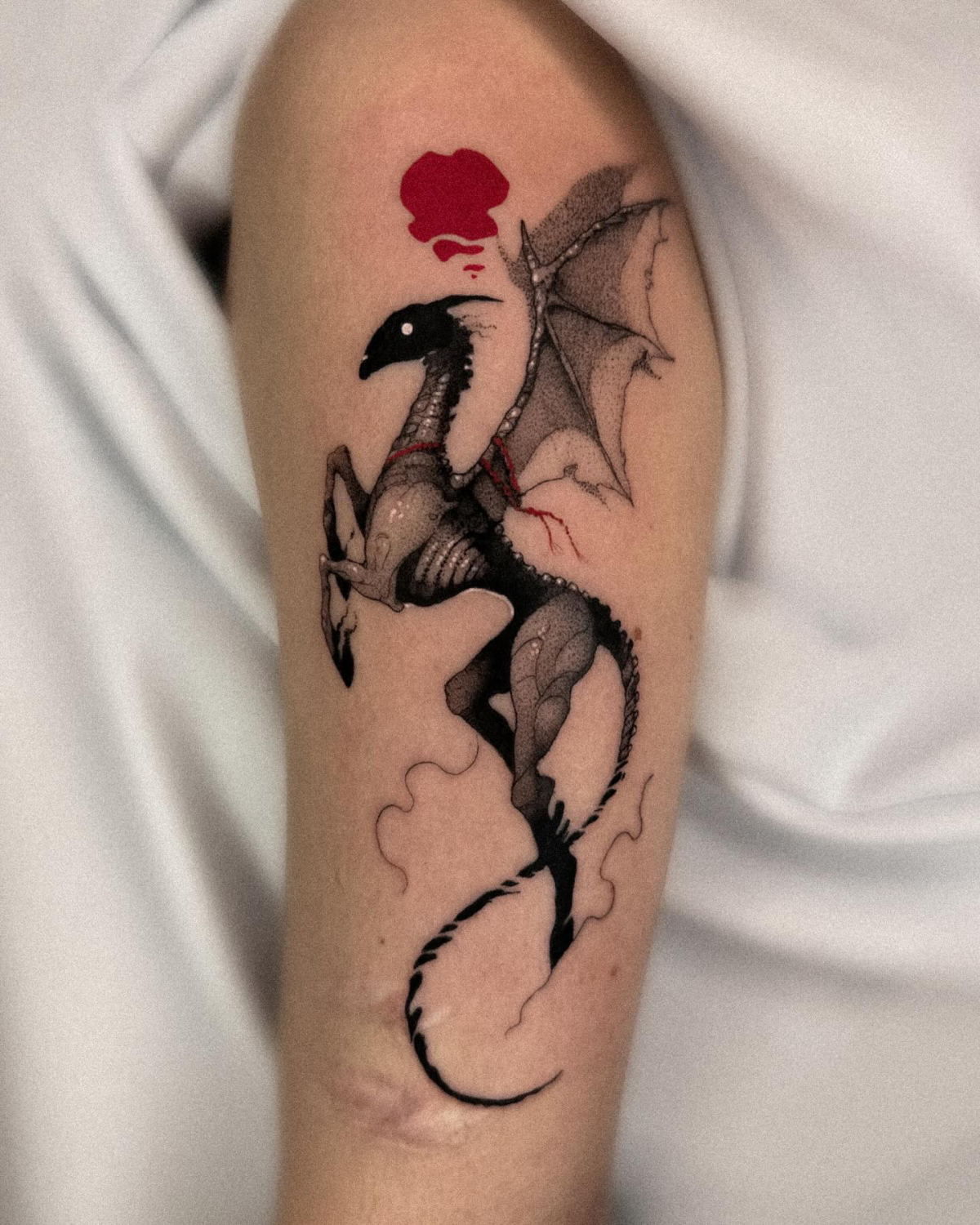
Let’s Talk Galleons: What a Good Tattoo Actually Costs
Alright, let’s get down to the money talk, because it matters. A good tattoo is an investment in permanent art. You’re not just paying for ink; you’re paying for an artist’s years of training, their skill, expensive equipment, and a custom design.
Most professional shops will have a shop minimum, which is the absolute lowest price they’ll charge for any tattoo, no matter how small. This usually falls between $100 and $200. So even for a tiny lightning bolt, that’s your starting point. For anything larger, artists typically charge an hourly rate, which can be anywhere from $150 to $300+ an hour depending on their skill and demand.
Remember that 40-hour back piece of the Forbidden Forest I mentioned? You do the math. That could easily be a $6,000 to $12,000+ project. So please, don’t haggle with your artist. It’s better to save up and pay for the quality you deserve. This art is going to be with you for the rest of your life—it’s worth doing right.
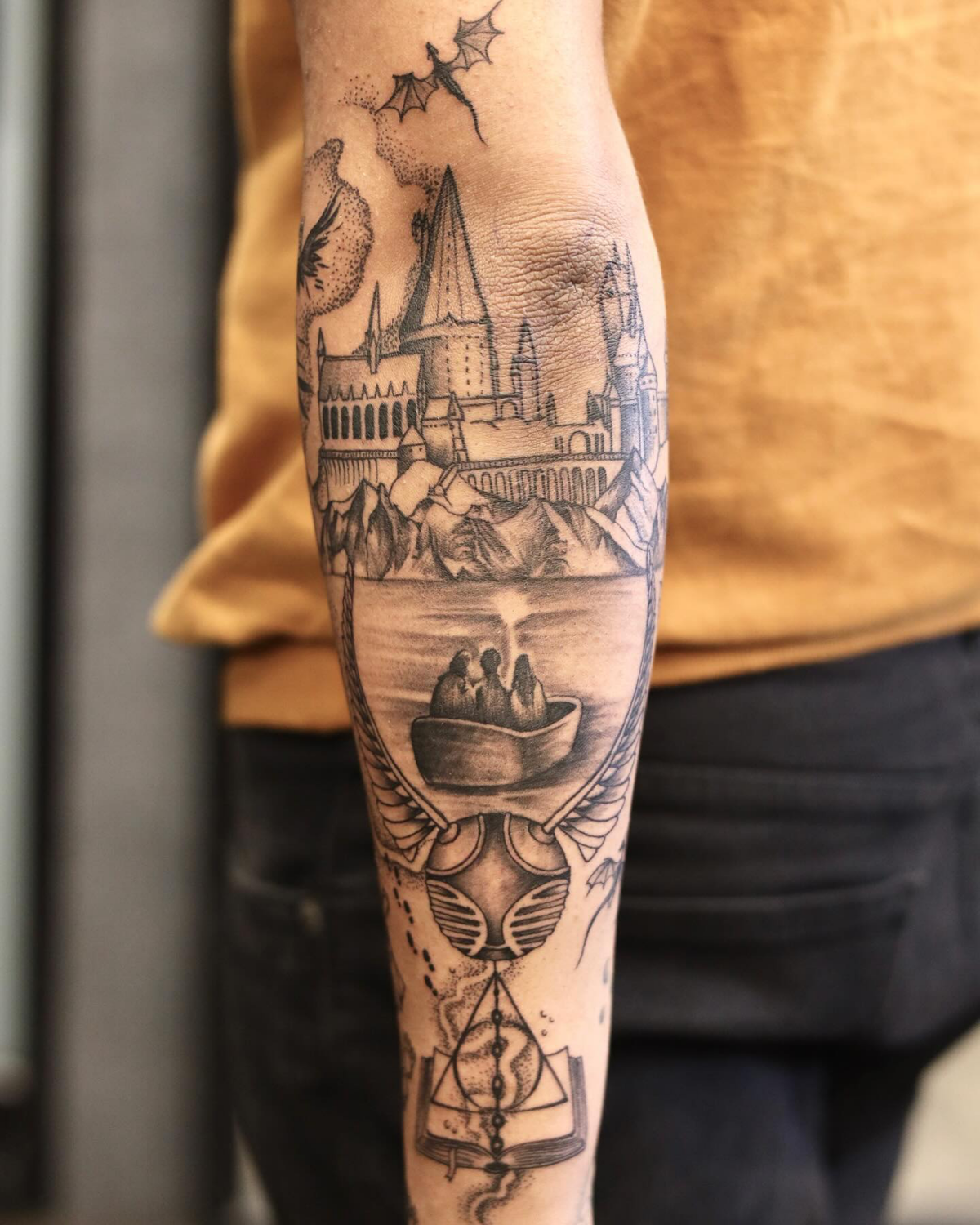
Popular Concepts, Reimagined by a Pro
The Symbols: Best and Worst Placements
The symbol of the three artifacts is probably the most requested design from the series. I’ve done it hundreds of times. But instead of just a basic icon, let’s get creative. The wand can be stylized as Elder wood. The stone can have a small crack. The cloak can have a unique texture woven into it. One of my favorite takes was replacing the circle with a wreath of Gillyweed for a client who was a marine biologist.
But where you put it is just as important. Here’s a quick rundown of the best and worst spots for a small, symbolic tattoo:
- Best Spots: The forearm, calf, back of the neck, or behind the ear. These areas are relatively stable, don’t see a ton of sun, and hold ink very well over time, keeping those lines crisp.
- Worst Spots: Fingers, hands, and feet. I know, finger tattoos are trendy, but I generally advise against them. The skin on your fingers regenerates incredibly fast and doesn’t hold ink well. That perfect symbol will likely be a blurry, faded mess in a year or two. The inner wrist is also tricky—the skin is thin and in constant motion, which can lead to faster fading and blowouts.
A quick word on pain: everyone’s tolerance is different, but generally, fleshier areas with more muscle or fat (like the outer thigh or bicep) hurt less. Bony areas right over the bone (like the ribs, sternum, feet, and spine) are typically much more painful.

The Creatures and Places
Creatures like a phoenix or a skeletal horse offer so much artistic freedom. A phoenix is all about fiery colors and flow, designed to wrap around a muscle. A skeletal horse, on the other hand, is about structure and using the skin’s negative space to create an ethereal, bony look. Both are fantastic subjects.
As for places like the magical castle or the dark forest, you have to think big. You simply cannot tattoo a detailed castle on your ankle and expect to see the windows. These are large-scale projects, best suited for a thigh, back, or as part of a full sleeve. The commitment in time, money, and pain tolerance is serious, but the result can be a breathtaking, immersive piece you can get lost in.
The Practical Magic: Your Tattoo Journey
Finding Your Artist (and How to Contact Them)
Finding the right artist is non-negotiable. Start by searching on social media for hashtags related to your city and the tattoo style you want (e.g.,
NYCTraditionalTattoo,
LAFineLine). Look through portfolios until you find an artist whose work makes you say “WOW.” Make sure their style consistently matches what you’re looking for.
Once you’ve found them, how do you reach out without sounding like a rookie? Here’s a quick template for a perfect first email:

Subject: Tattoo Inquiry – Phoenix Idea
“Hi [Artist’s Name],
I absolutely love your neotraditional work, especially the vibrant colors and bold lines! I’m hoping to get a phoenix tattoo on my outer thigh, about 8 inches tall. For me, it represents resilience and rebirth.
I’ve attached a few of your tattoos that I really love to show the style I’m after. What is your booking process like, and when might your books be open for new projects?
Thanks so much,
[Your Name]“
This is perfect because it’s polite, shows you’ve done your research, and gives the artist all the key info they need: subject matter, size, placement, and your personal ‘why’.
Before and During the Appointment
Your prep makes a huge difference. In the 24 hours before your session, do NOT drink alcohol. It thins your blood, making you bleed more, which can push ink out and make the artist’s job harder. Get a good night’s sleep and eat a solid meal about an hour before you come in. Low blood sugar is the #1 reason people feel faint.
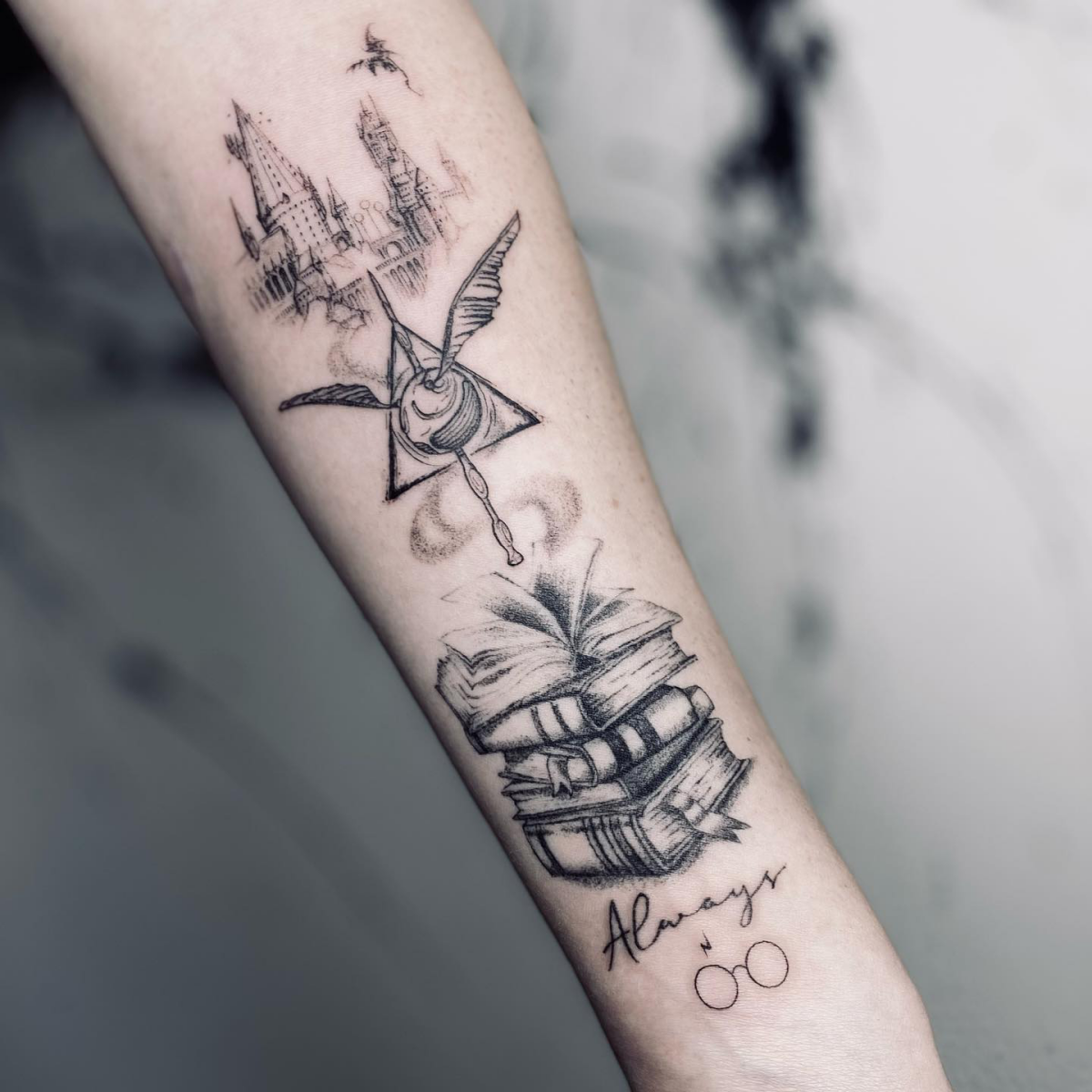
During the session, we’ll finalize the stencil. This is your last chance to make any tweaks! Once you approve it, the buzzing starts. Oh, and a fun fact: the “buzzing” sound of a tattoo machine isn’t actually the needles. It’s the motor and the armature bar hitting the coils. The needles themselves are totally silent! The feeling is often described as a hot, vibrating scratch. It’s not fun, but it’s manageable. Don’t be a hero—if you need a break, just ask.
The Aftercare Spell: This Part Is On You
A tattoo is only half my work; the other half is your healing. Bad aftercare can destroy a perfect tattoo. ALWAYS listen to your specific artist’s instructions.
My method is pretty standard. I’ll cover the new tattoo with a clear adhesive bandage. You’ll leave this on for 3-5 days. It protects the tattoo while it’s an open wound, and you’ll see a gross-looking fluid bubble (plasma, excess ink, and blood) build up underneath. This is totally normal.
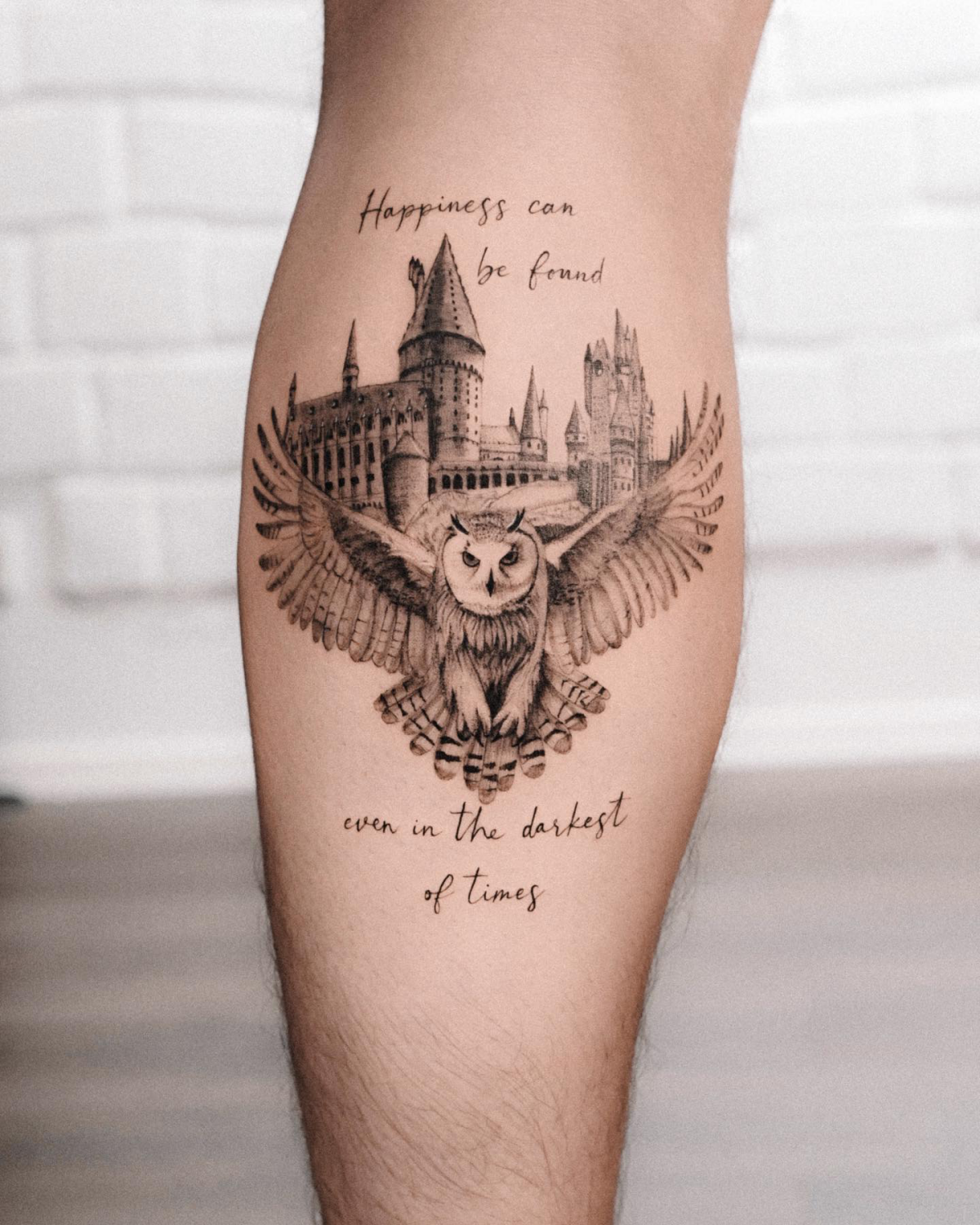
After you remove the bandage (pro-tip: do it in a warm shower to loosen the adhesive), you’ll wash the tattoo gently with a mild, unscented soap and pat it dry with a clean paper towel. Never rub it. For the next two weeks, you’ll apply a very thin layer of unscented lotion 2-3 times a day. Your tattoo will peel and itch like a sunburn. DO NOT PICK OR SCRATCH.
Quick Aftercare Shopping List:
- Unscented antibacterial soap (like Dial Gold is a classic choice).
- A good, high-quality unscented lotion (something like Lubriderm, Cetaphil, or Aquaphor).
- Paper towels for clean, gentle drying.
And finally, the Unforgivable Curses of Aftercare: no soaking your tattoo (no baths, pools, or oceans for at least two weeks) and keep it out of the sun! A fresh tattoo is a wound. Sun exposure can cause massive damage, fading, and even infection. Trust me, I’ve seen it happen, and it’s not pretty.
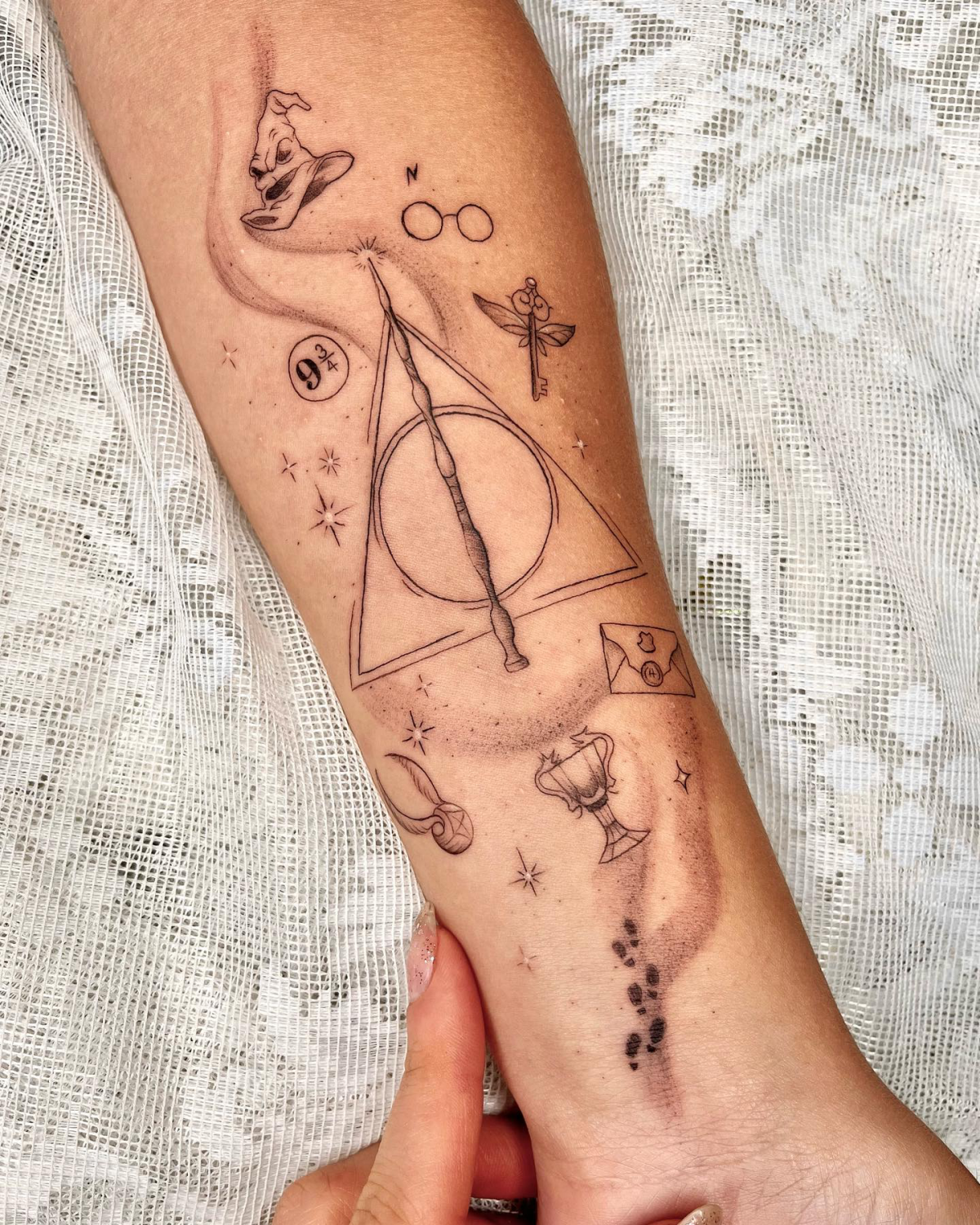
In the end, getting a tattoo inspired by a world you love is a collaboration. By thinking through your design, finding a skilled professional, and taking your aftercare seriously, you ensure the result is something powerful and magical that will truly last a lifetime.
Galerie d’inspiration
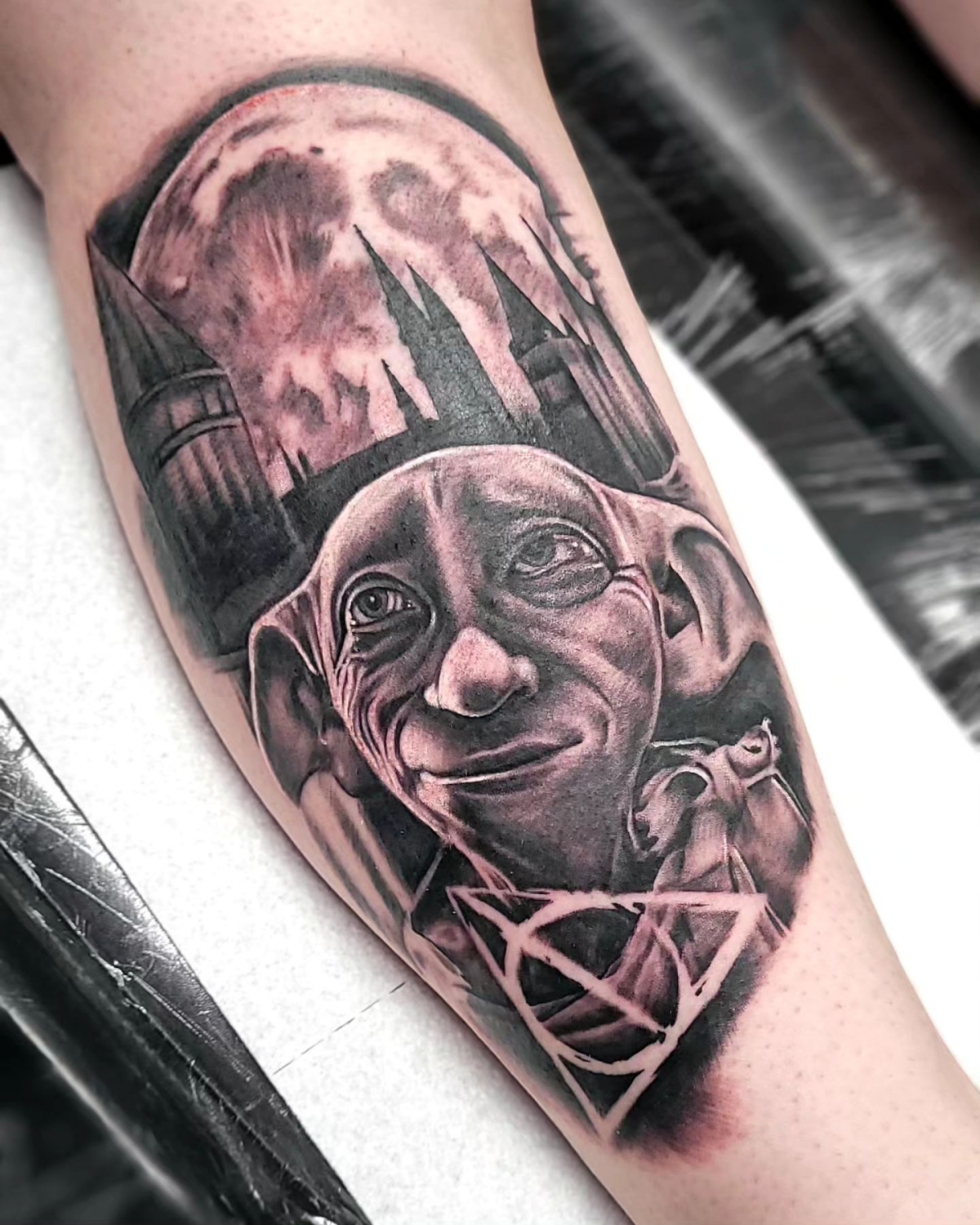
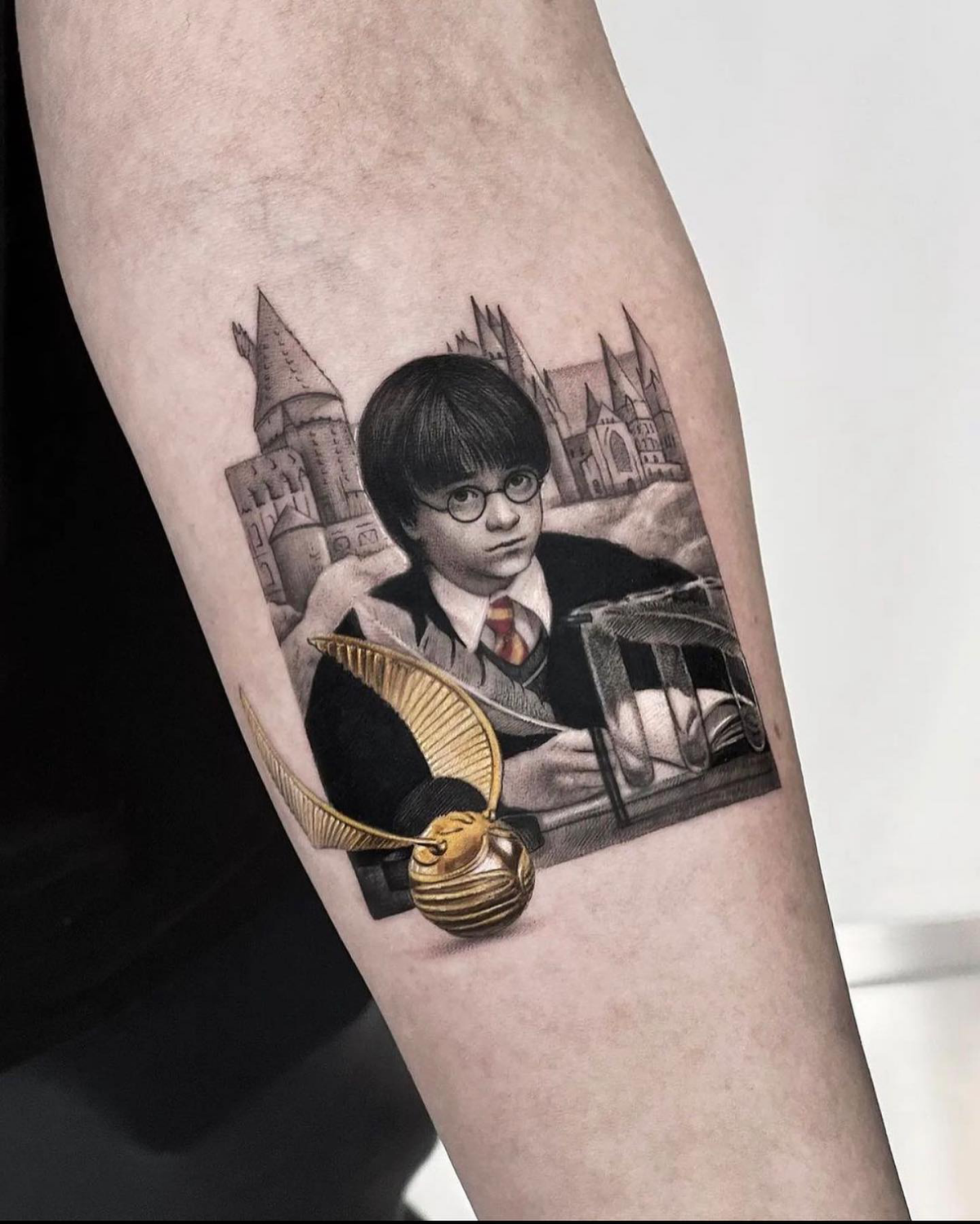
Did you know that the average fine-line tattoo needle grouping is often thinner than a human hair?
This incredible precision is what allows for the delicate script of the Marauder’s Map or the intricate wings of a Golden Snitch. However, this delicacy is also its vulnerability. Over years, as skin ages and ink particles naturally migrate, these ultra-fine lines can soften and blur. A skilled artist will account for this, ensuring the design has just enough space and structure to remain legible and beautiful for decades to come.
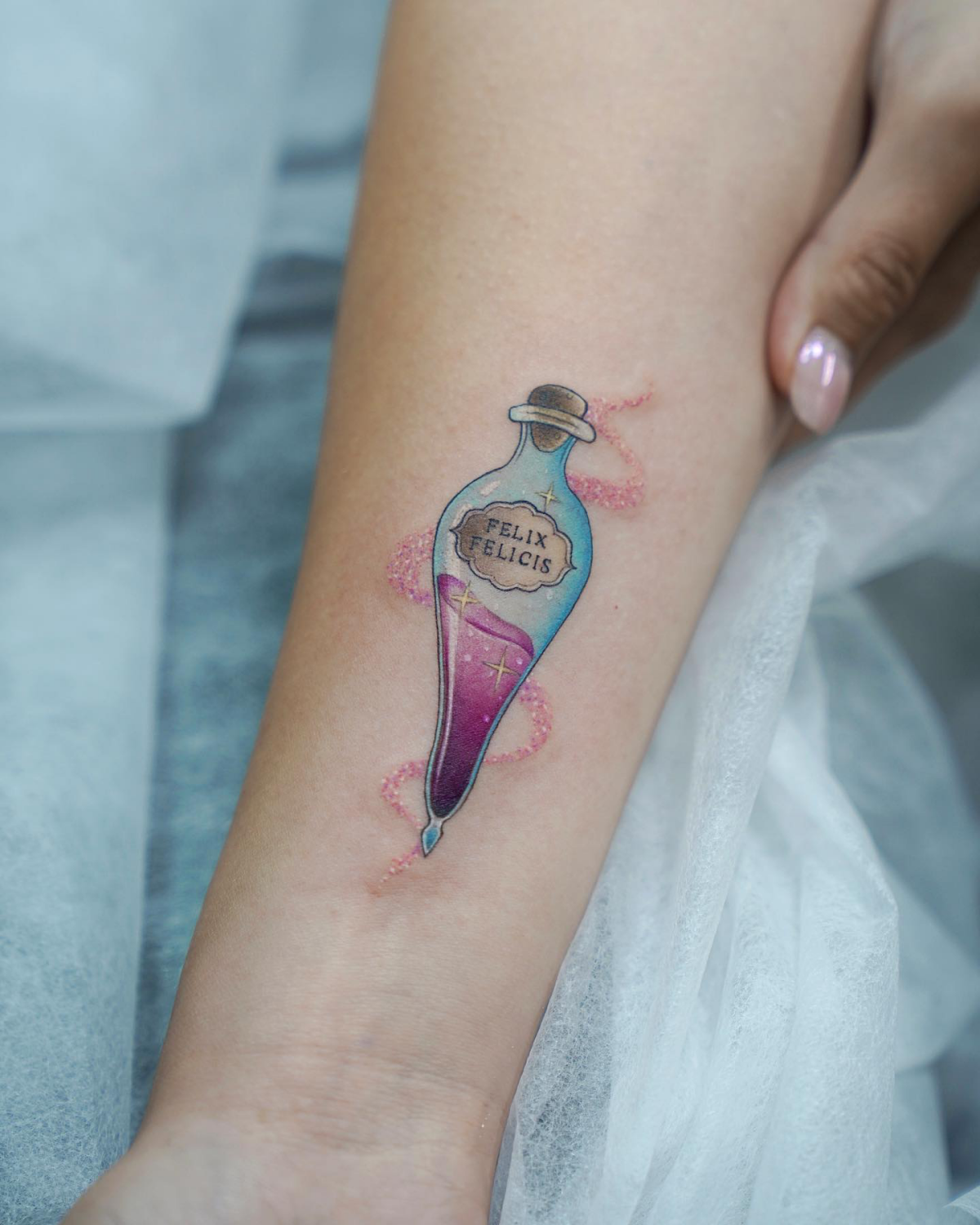
When preparing for your tattoo session, think beyond the design and consider the inks. Many top-tier artists now exclusively use vegan-friendly pigments. Brands like Eternal Ink or World Famous Ink offer incredibly vibrant, cruelty-free palettes. So, whether you’re getting a majestic Hippogriff or a loyal Niffler, you can ensure the tribute to your favorite magical creature aligns with a compassion for real-world ones.
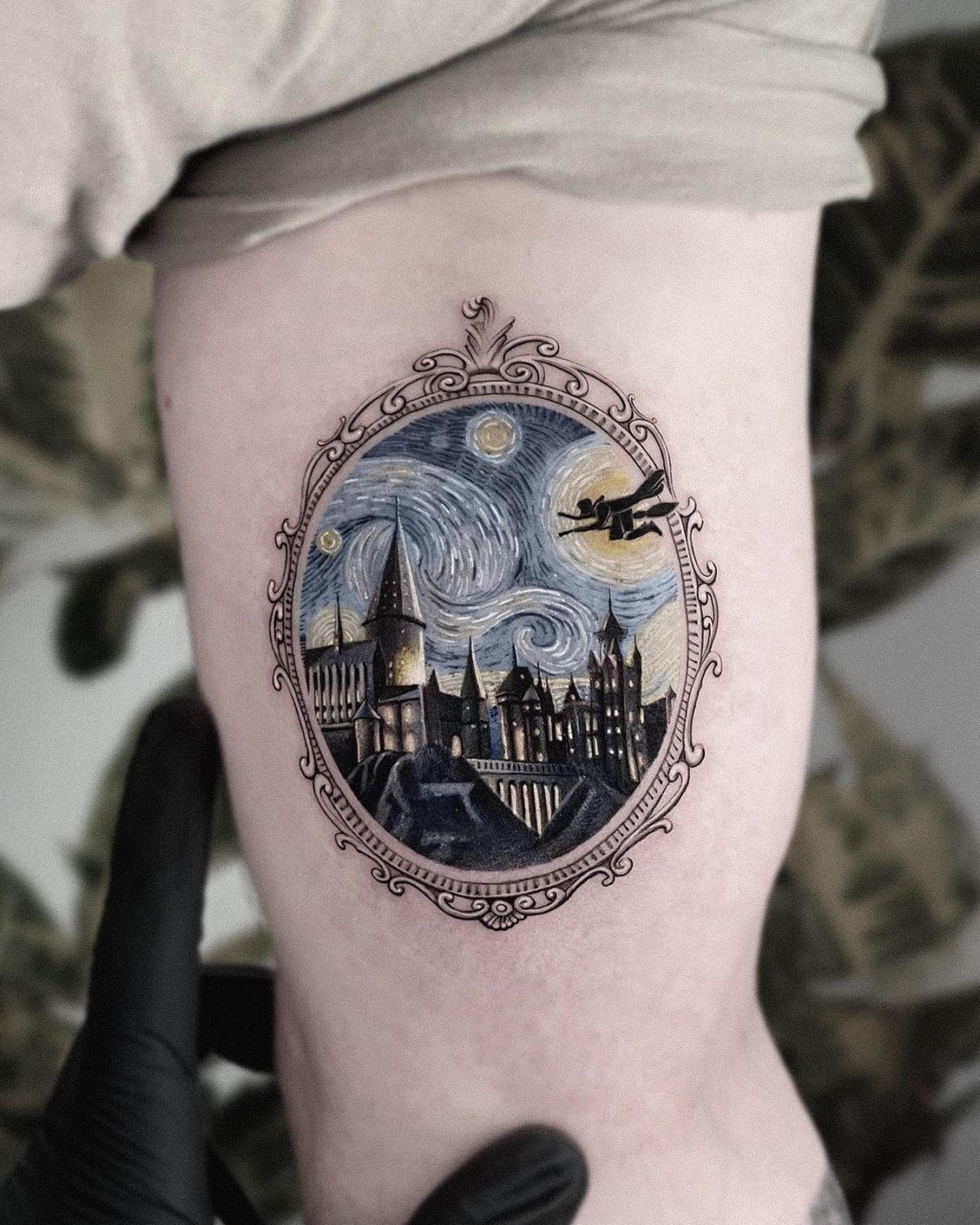
How do I make my magical tattoo truly unique when so many exist?
Look to the margins of the story. Instead of the main symbols, consider tattooing a sprig of Gillyweed for adaptability, a beautifully rendered Mandrake for resilience, or the alchemical symbol for a Horcrux if you connect with the darker, more complex themes. A pattern from a character’s robes, a sketch of the Weasleys’ Burrow, or even the star constellation named after a beloved character can be a deeply personal and subtle nod that only true fans will recognize.
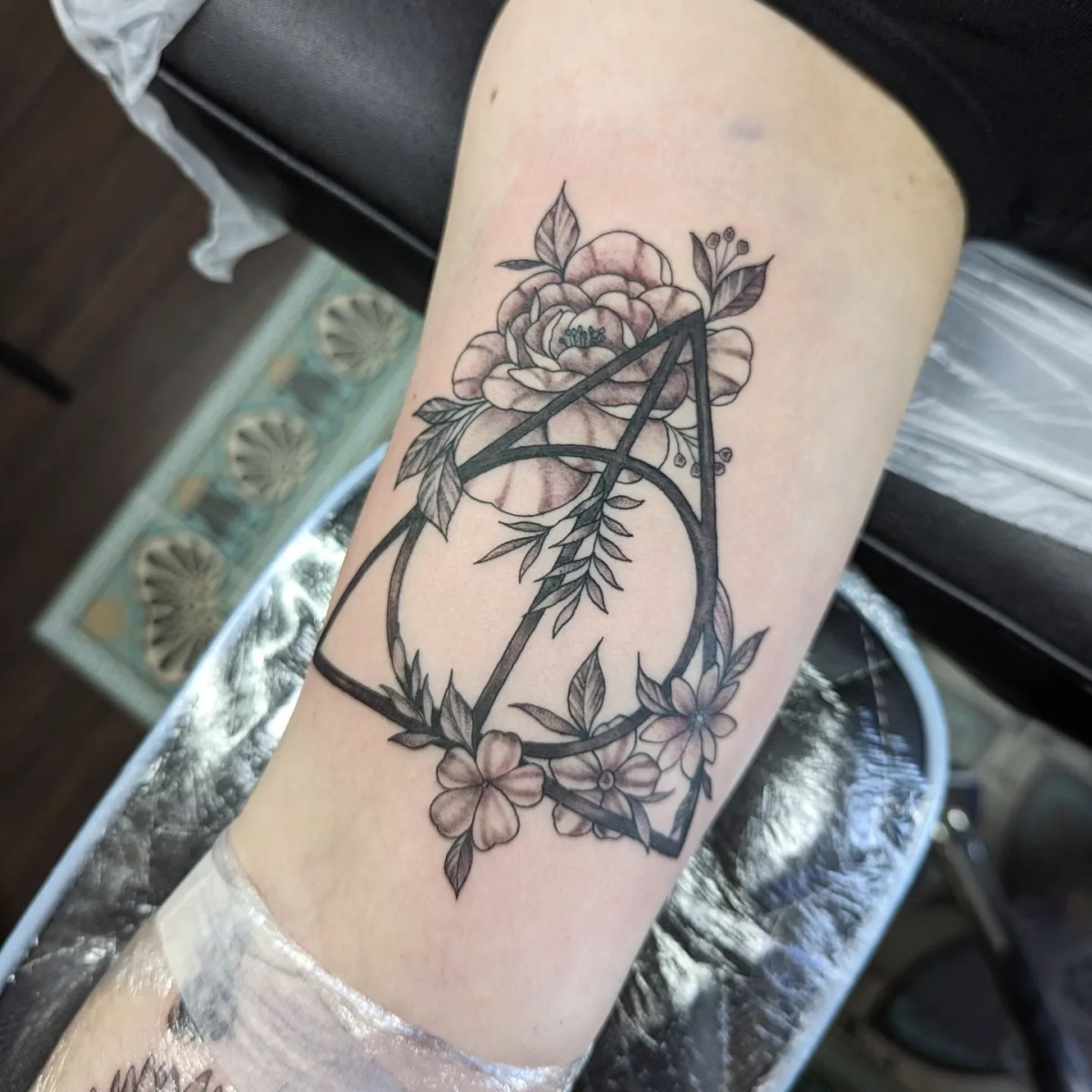
- A vibrant, lasting color palette.
- Clean lines that won’t blow out.
- A healing process that’s smooth and quick.
The secret? Proper aftercare is your final magical spell. For the first few days, gently wash the area with a fragrance-free soap like Dr. Bronner’s Baby Unscented. Then, apply a very thin layer of a specialized ointment like Hustle Butter Deluxe or a classic like Bepanthen. Less is more—you want to moisturize, not suffocate, your new art.
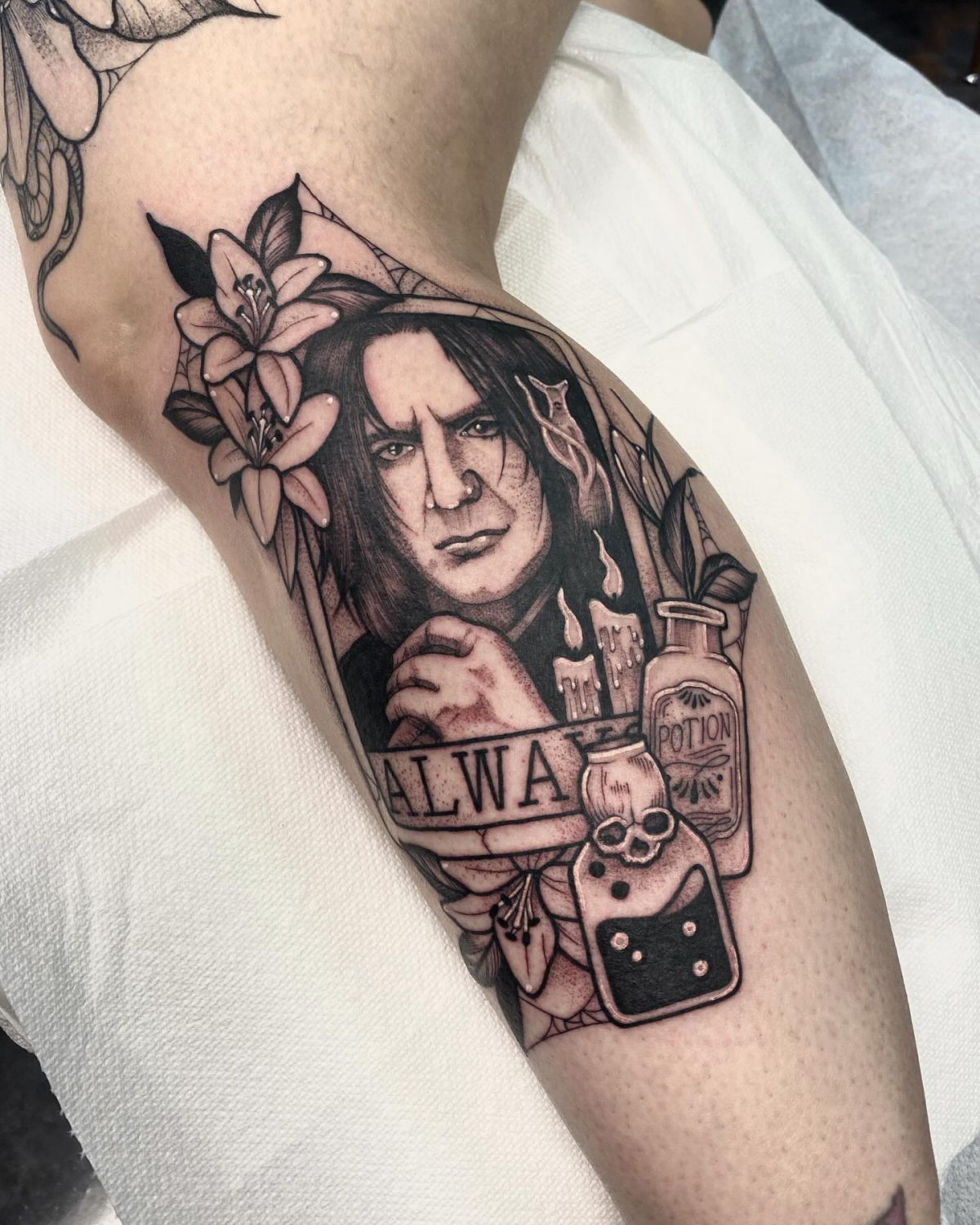
Color Realism: Imagine a Patronus shimmering on your skin in ethereal blues and whites, rendered with the soft, blended glow of a watercolor painting. This style is perfect for capturing the magic and emotion of the wizarding world, but requires an artist with a masterful understanding of color theory and application. It may also require more frequent touch-ups over the years to keep the colors bright.
Black & Grey: Think of the stark, powerful imagery of a Dementor or the architectural detail of Hogwarts castle. Black and grey work excels at creating depth, mood, and texture. It’s often considered more timeless and can be less demanding in terms of long-term sun care, making it ideal for classic, somber, or intricate designs like a Dark Mark.
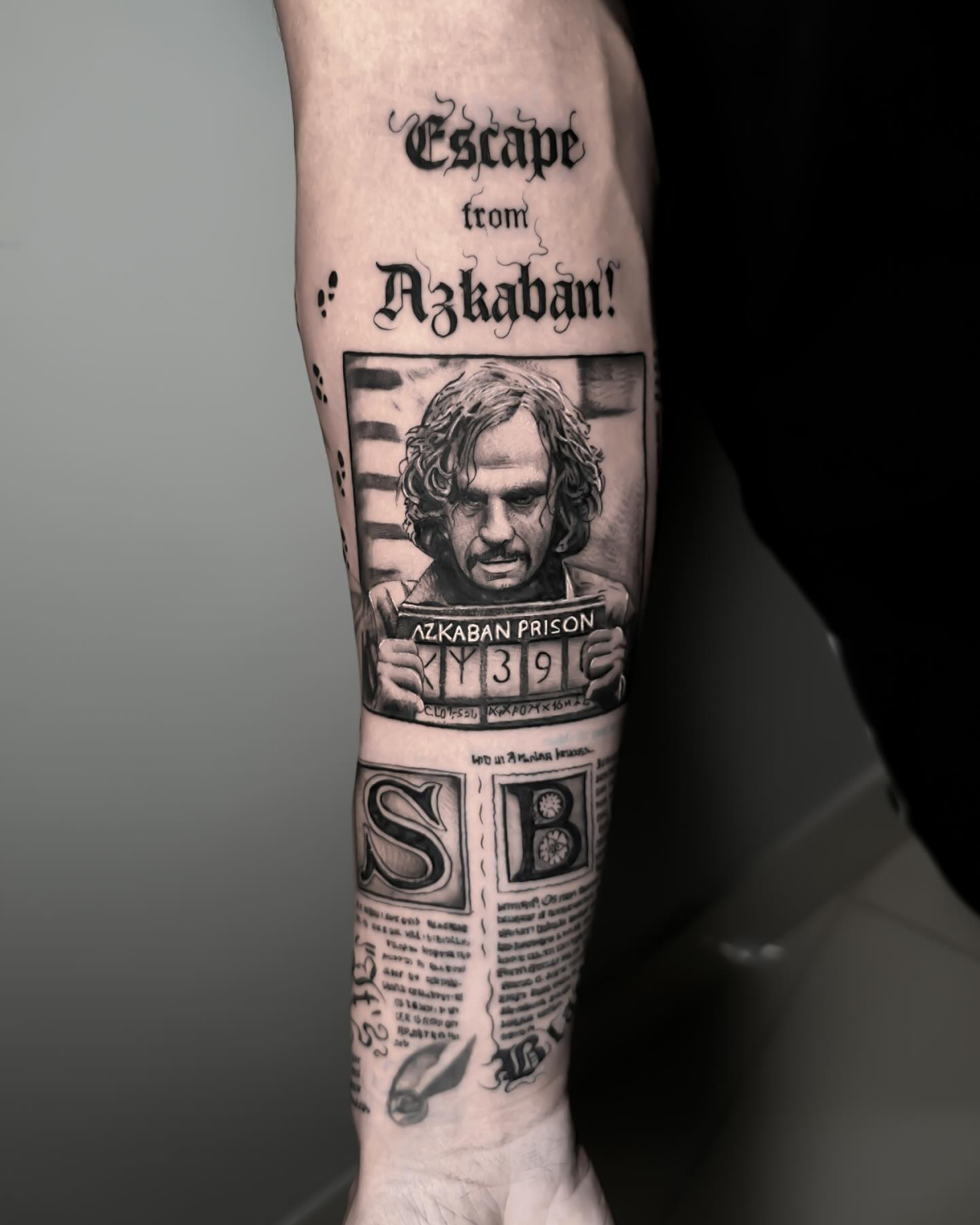
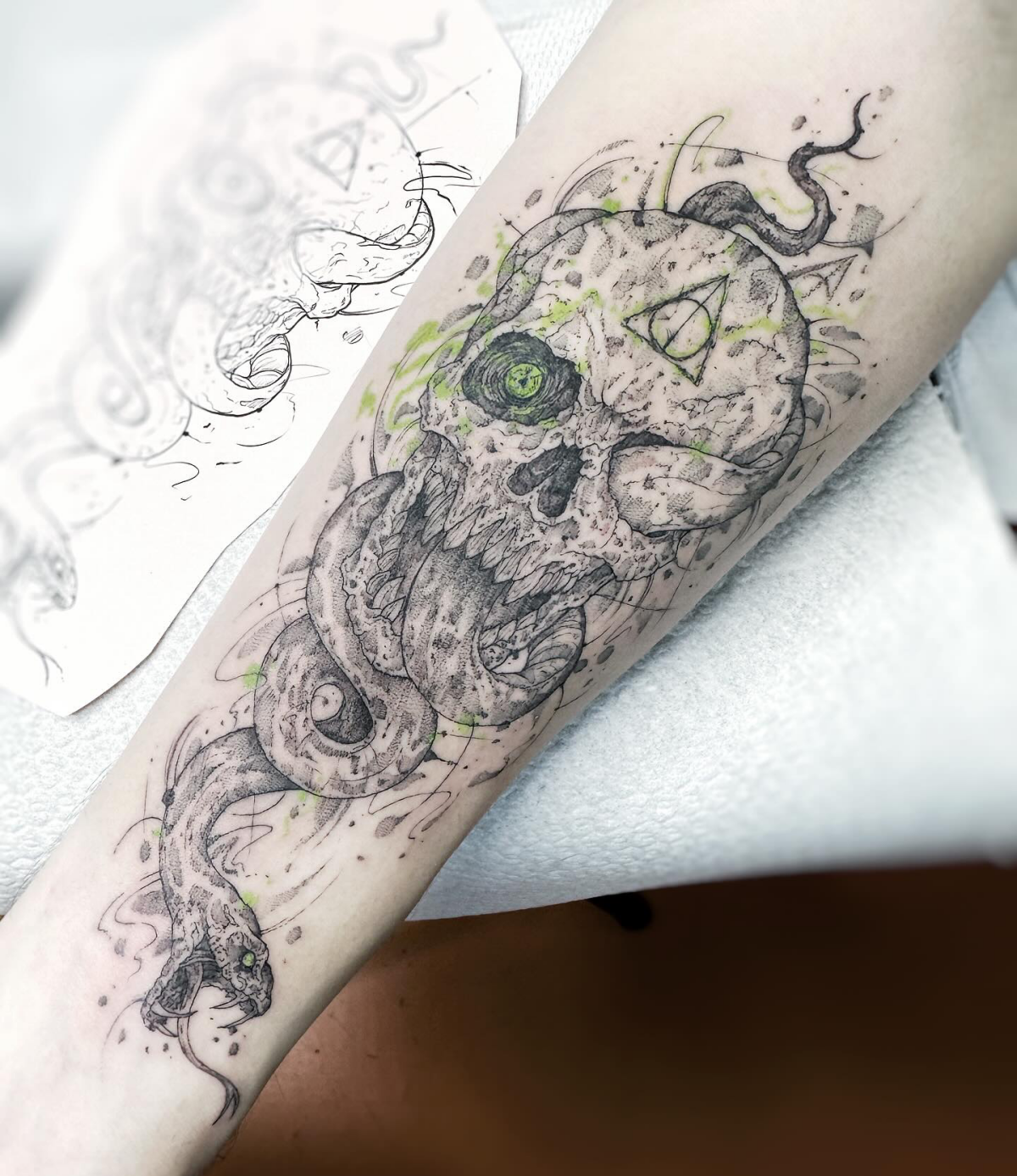
The placement of your tattoo can amplify its meaning. A winged key on the ankle or wrist suggests movement and freedom. The Dark Mark, traditionally placed on the forearm, carries a sense of identity and allegiance. A protective charm or a quote from Dumbledore over the heart or on the ribs feels like a personal mantra kept close. Think about how your body moves and where the tattoo will feel most at home.
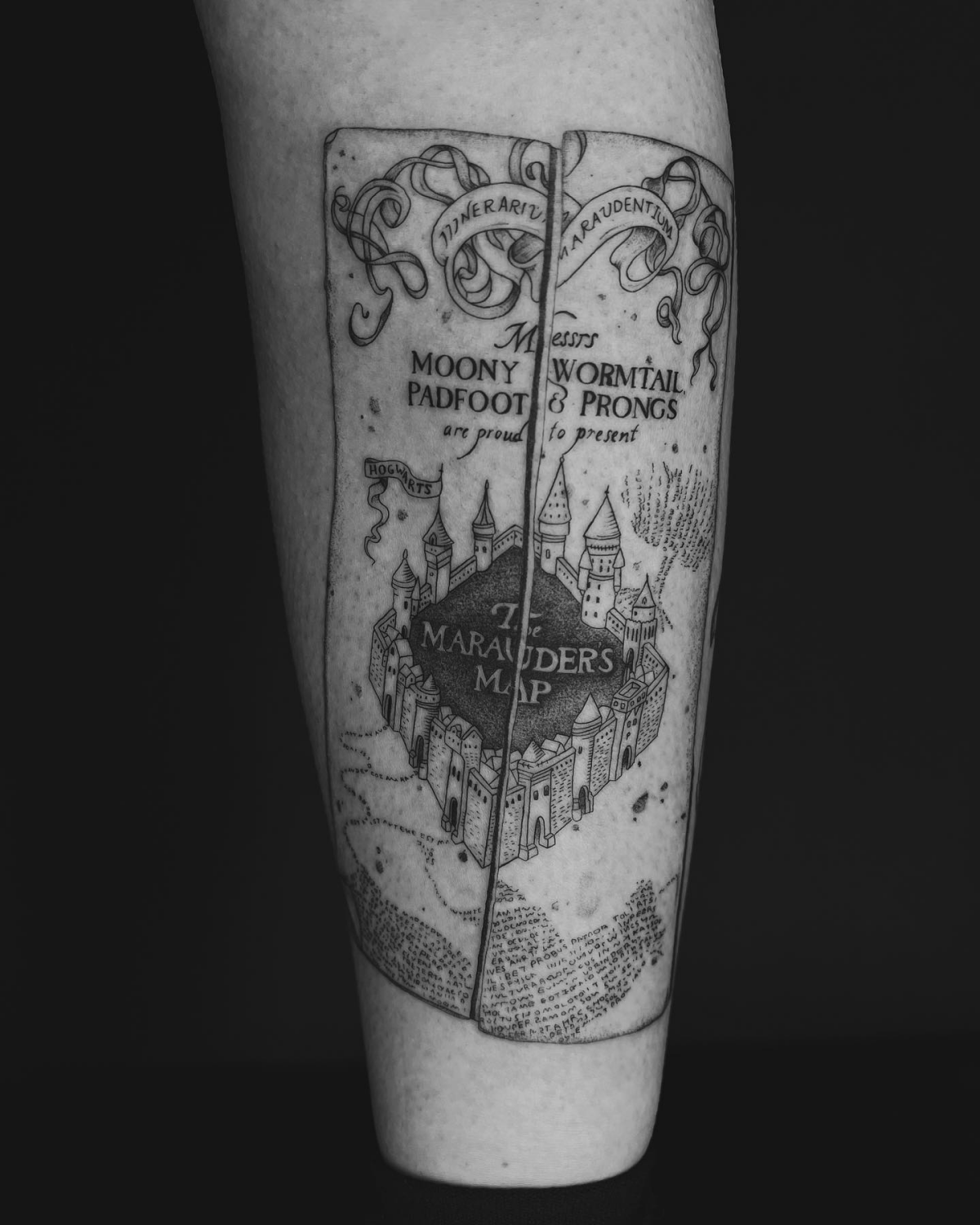
Many of the most iconic magical symbols are geometric: the triangle of the Cloak, the circle of the Stone, the line of the Wand.
This simplicity is their strength. When discussing a geometric design with your artist, precision is everything. Ask to see examples of their line-work in their portfolio. A true professional will use specific needle configurations and techniques to ensure every line is perfectly straight and every circle is flawlessly round, creating a symbol that looks as powerful on skin as it does in lore.

Important point: Don’t just search for a
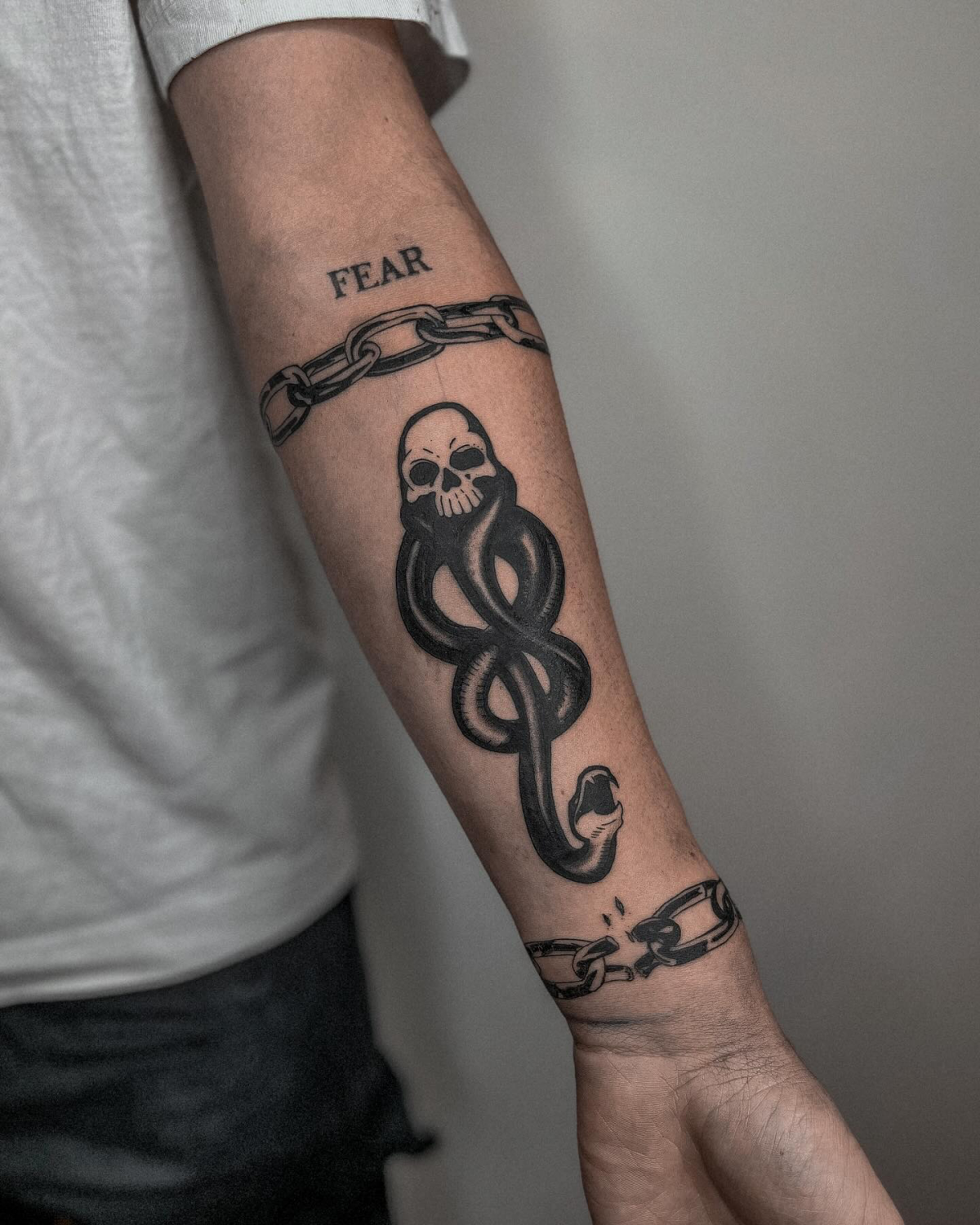
Want to combine your love for the wizarding world with another artistic passion? The possibilities are endless. We’ve seen incredible tattoos inspired by:
- Van Gogh’s ‘Starry Night’ with Hogwarts in the distance.
- Japanese Ukiyo-e style renderings of magical creatures.
- Art Nouveau frames woven around a Patronus.
- Tarot card designs featuring characters like Snape as the Magician or Luna as The Star.
Mixing aesthetics can elevate a fan tattoo into a true work of art.
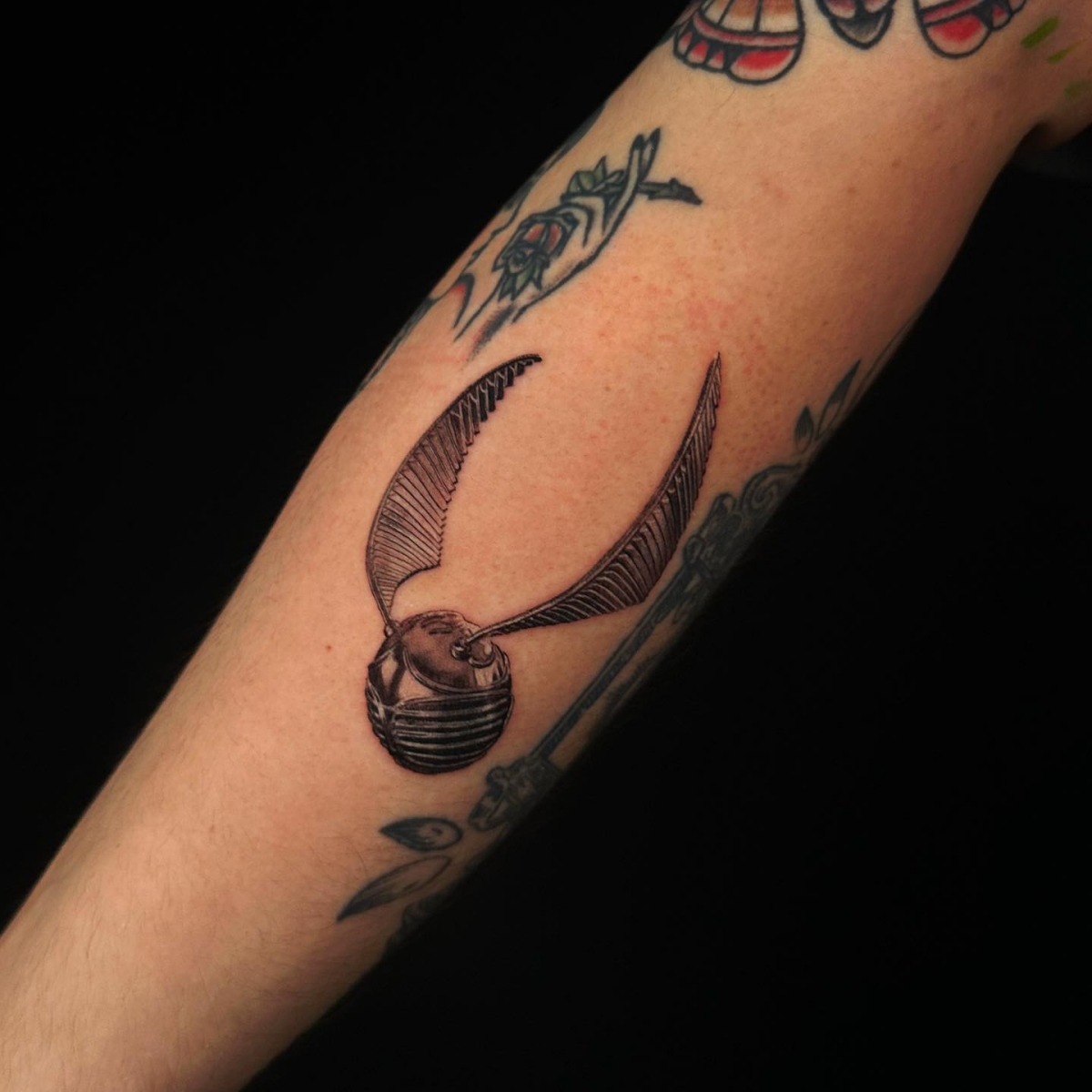
A common pitfall is wanting to include too much. A tattoo is not a movie poster. Trying to cram Hogwarts, a Golden Snitch, a wand, and your favorite quote into one small piece will result in a cluttered, illegible design that ages poorly. A great tattoo has a single, clear focus. Trust your artist to help you edit your idea down to its most powerful core element. Simplicity is often the key to an impactful and lasting design.
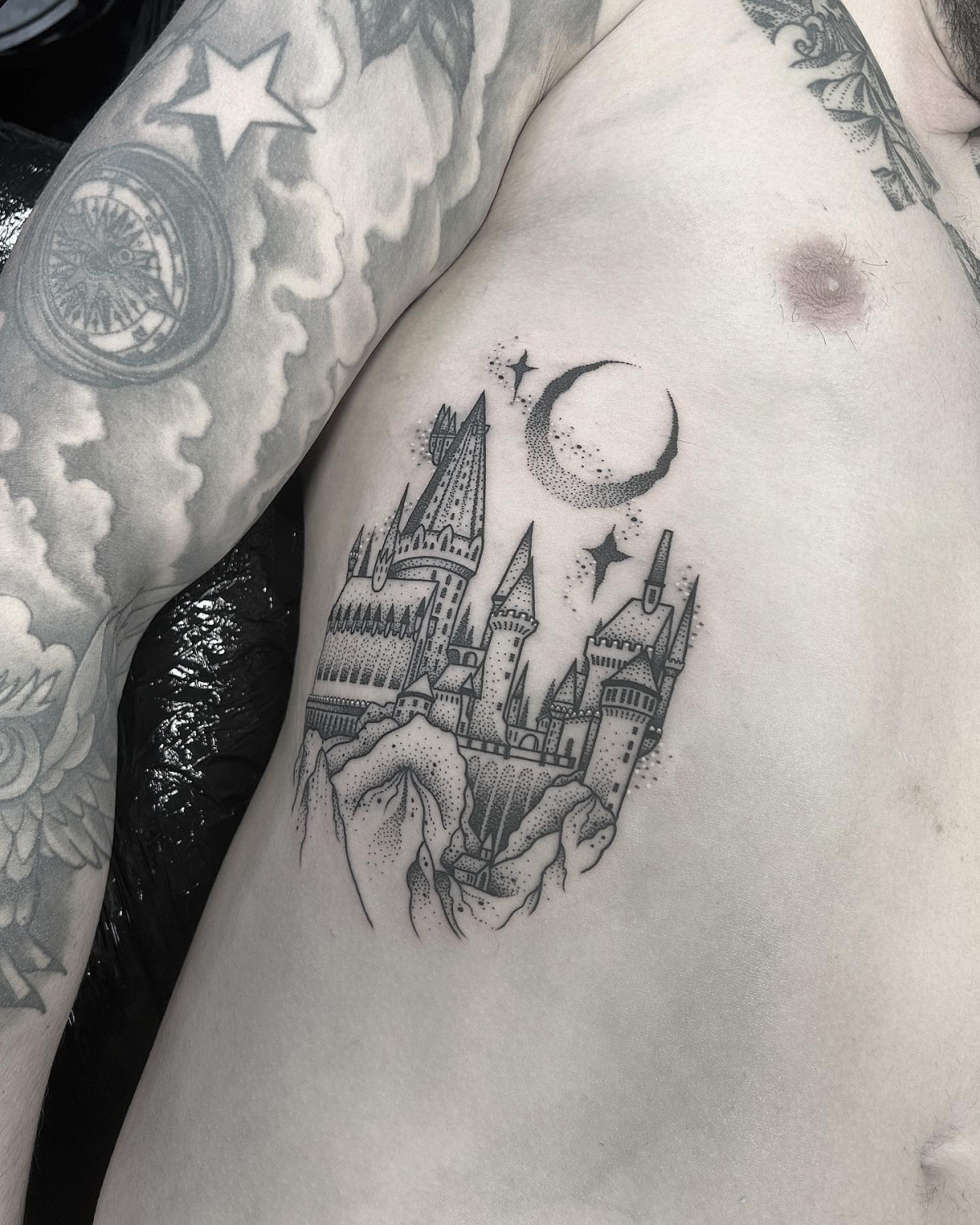
Is a white ink tattoo a good idea for something like a Patronus?
While the idea of a ghostly, white-ink Patronus is tempting, it’s a risky charm. White ink is notoriously difficult to work with and its longevity is unpredictable. On some skin tones, it can turn yellowish or fade completely within a few years. Many experienced artists will advise against using it as a primary outline, suggesting it instead for small, bright highlights within a larger design to ensure your magic doesn’t vanish.
The financial side of a tattoo can be intimidating, but a magical piece doesn’t have to break the Gringotts bank. Consider starting with a smaller, highly-detailed piece from a top-quality artist rather than a larger, less-detailed one from a cheaper shop. A single, perfectly executed flying key, a tiny lightning bolt scar, or the three-star asterism from the book pages can be incredibly powerful and affordable. Quality over quantity is the best investment.










